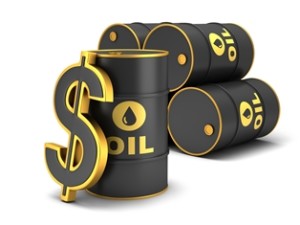
Oil prices fell on Tuesday as global oversupply encouraged several banks to cut their forecasts for crude for this year and 2018.
Oil rig worker Brent crude was down 50 cents at $46.38 a barrel by 1120 GMT. U.S. crude was 50 cents lower at $43.90.
“The fundamental mood has taken a turn for the worse,” Harry Tchilinguirian, head of oil strategy at French bank BNP Paribas, told Reuters Global Oil Forum.
BNP Paribas slashed its forecasts for Brent by $9 to $51 a barrel for 2017 and by $15 to $48 for 2018.
Barclays also cut its 2017 and 2018 Brent forecasts to $52 a barrel for both years from $55 and $57 respectively.
Crude prices are about 18 percent below their 2017 opening levels despite a deal led by the Organization of the Petroleum Exporting Countries to cut production from January.
OPEC, along with Russia and some other major exporters, has agreed to hold production at about 1.8 million barrels per day (bpd) below levels pumped at the end of last year.
The limits will be maintained until March 2018 in an attempt to drain a global glut, but production elsewhere has risen as OPEC has held back.
U.S. oil production has jumped more than 10 percent over the last year to 9.34 million bpd. Nigeria and Libya, OPEC-members exempt from production limits, have also increased output.
“OPEC has yet to address this increase in production,” Goldman Sachs said in a note.
Without a significant fall in oil inventories or a decline in U.S. drilling and production, Goldman said crude prices could fall below $40 per barrel.
Big OPEC members are also under pressure to increase supply to customers, particularly in Asia, which could worsen oversupply.
State oil giant Saudi Aramco will meet customers’ full crude oil requirement in India and southeast Asia in August, two sources with knowledge of the matter said on Tuesday.
“There is no (supply) cut” even for heavier grades such as Arab Medium and Heavy crude, one of the sources said.
Gasoline demand tends to increase in the northern hemisphere summer as U.S. drivers take to the road and this has helped support prices in the short term.
But further ahead this demand should ease, weakening prices. “U.S. gasoline demand may have peaked in absolute terms last year,”
Bank of America Merrill Lynch said, adding it expected no tightness once the peak demand summer season was over.